After finding out that a component I wanted to base a circuit around isn't suitable, I've found a possible replacement part, but I have questions about the values for Cin and Cout capacitors and the D1 diode.
The datasheet under the 'Fixed Circuit' diagram doesn't give me any hints as to the correct values for Cin, Co or D1. From other reading, it looks like a 1N4002FSTR-ND diode would do the job for D1. But how do I work out what I should be using for Cin or Co?
From what I understand, these are used to filter both input and output or stablise things, but I don't understand how you would select appropriate values for a circuit like this.
The circuit I'm trying to build can be seen below:

There is a single 12 V unfiltered output, a 5 V output with a filter (for audio devices but that provides for lower amp functions) and a 5 V unfiltered output for higher current uses (GPS and charging cell phone).
Sorry about the lack of inline images and the absence of an image for the DC-DC component, but as a new user, I'm not able to post images or more links than I have. I will add a comment with a link to the DC-DC component, taken from the datasheet.
The DC-DC component:
